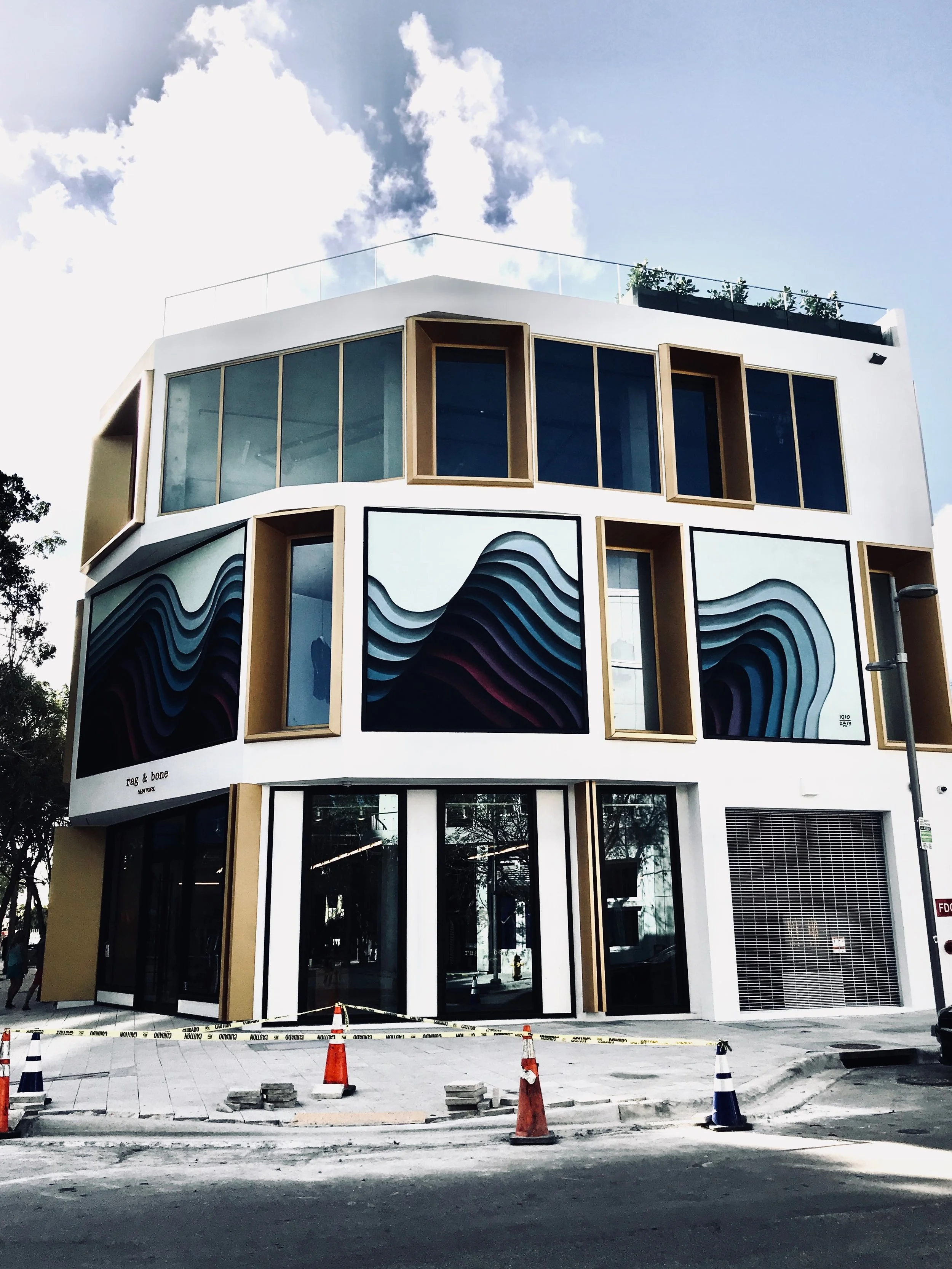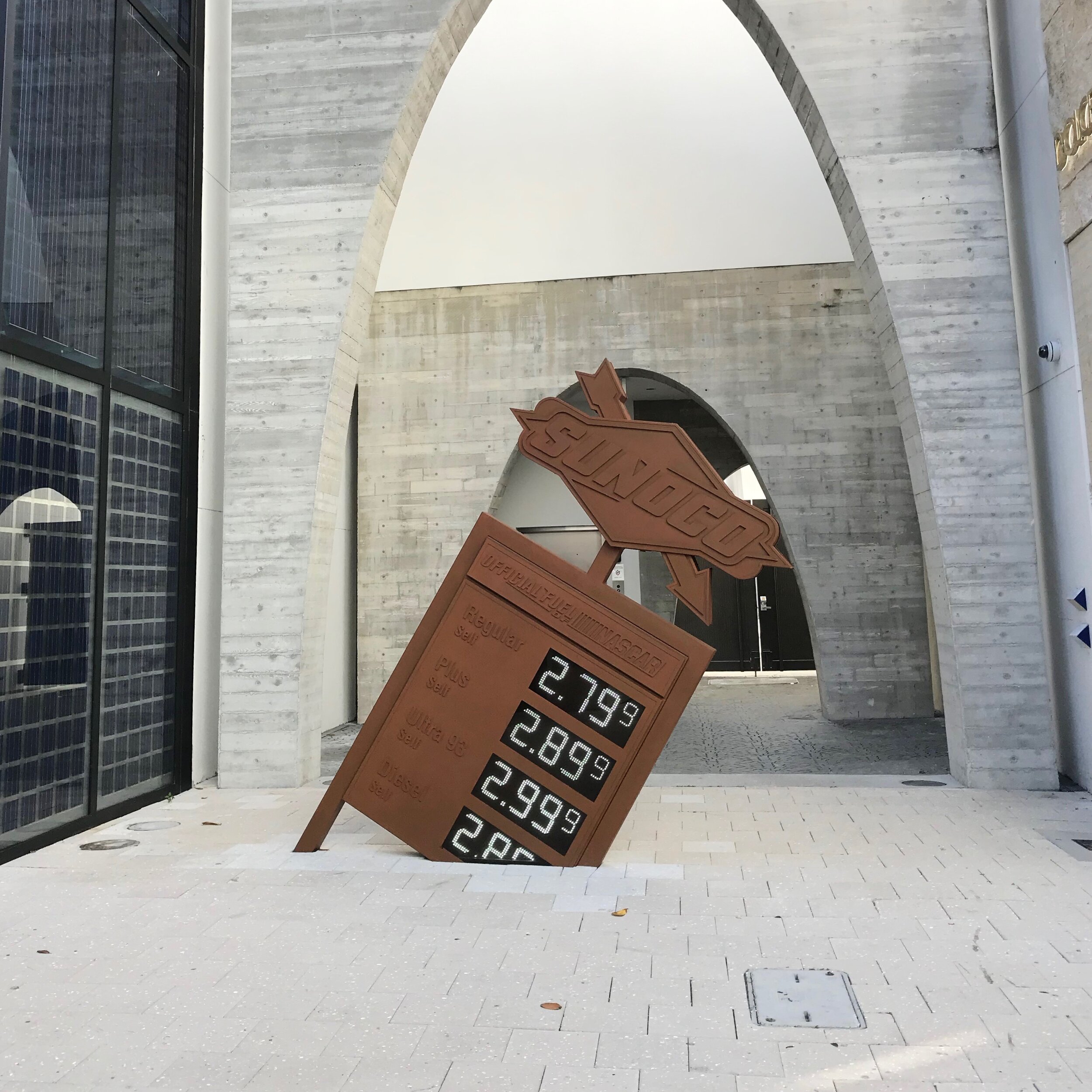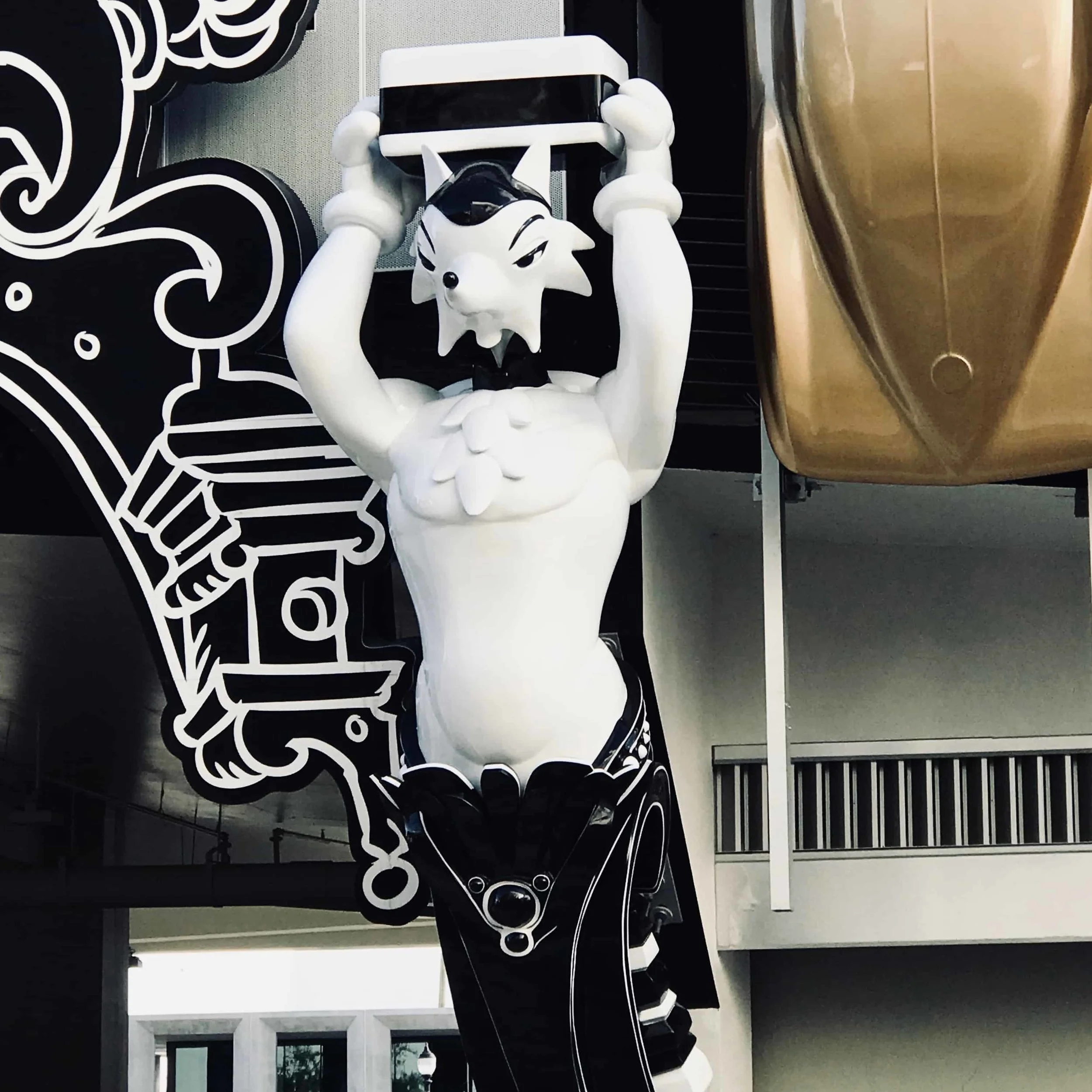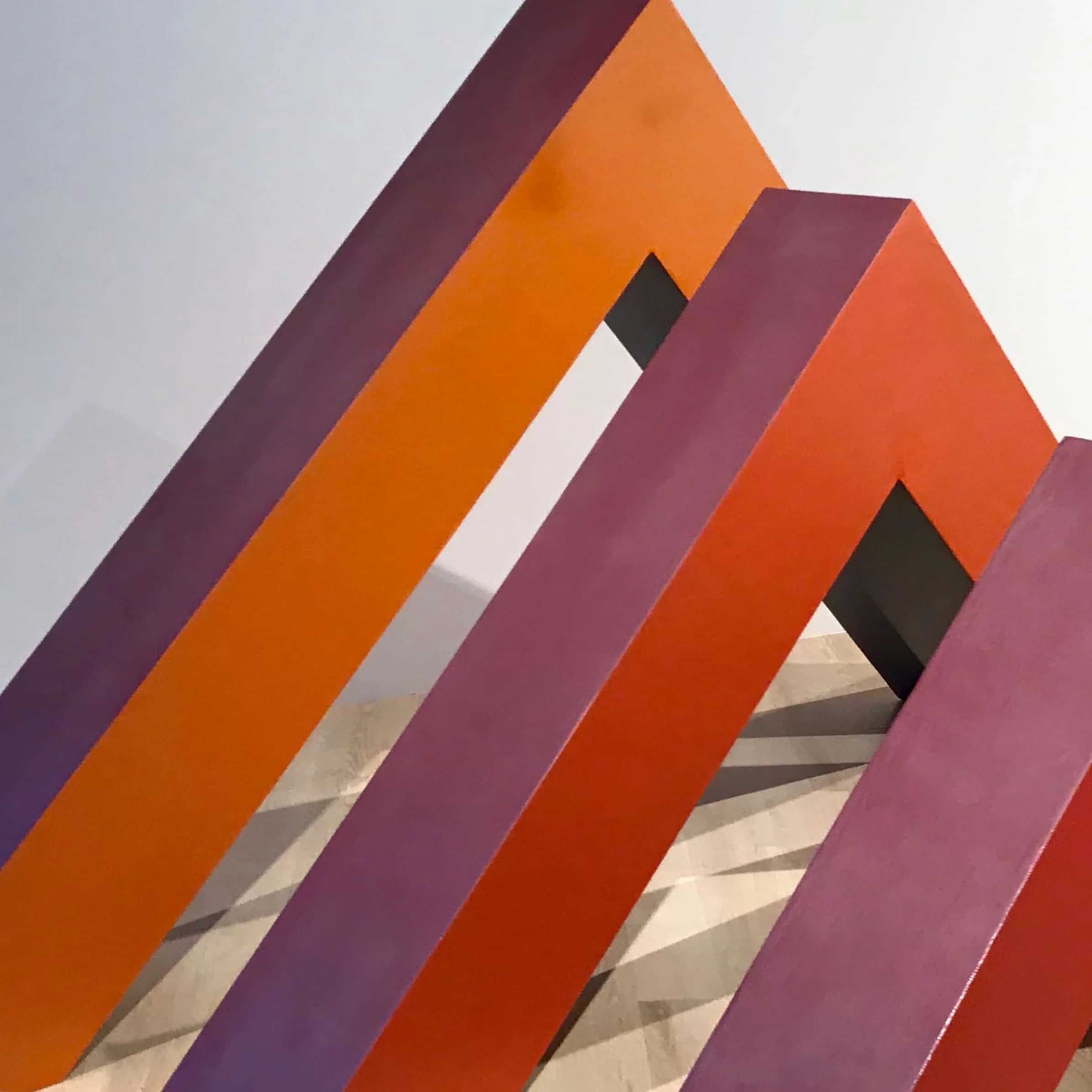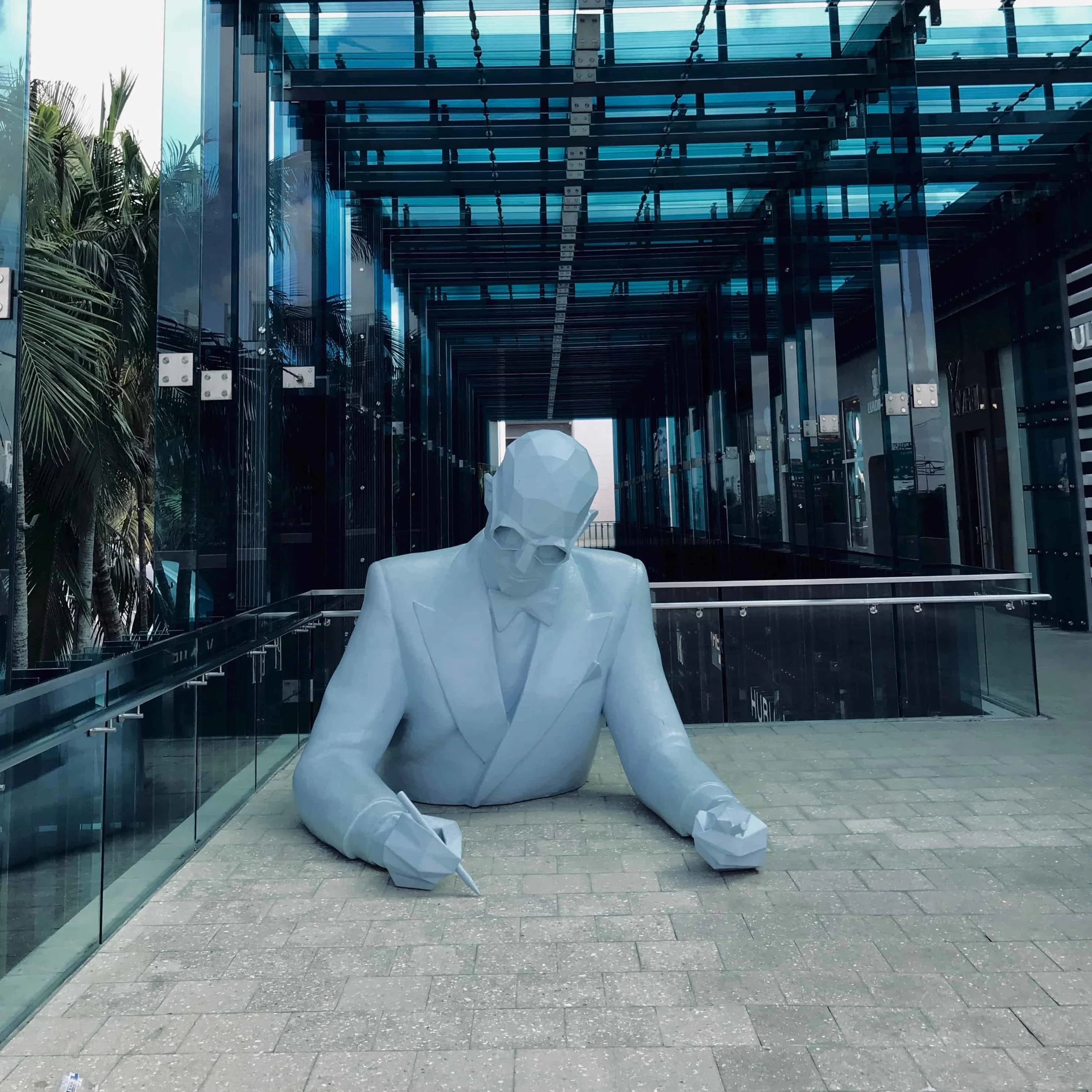"The Wave" 🌊 by the misterious 1010 🏄♂️ for Rag and Bone's facade at Miami Design District
Artist: 1010
📍Location: Rag & Bone
Neighborhood: Design District
Address: 89 NE 41st St, Miami, FL 33137
🌊 "The Wave"
🏄🏽♂️ Artist: 1010
📍Location: Rag & Bone
Neighborhood: Design District
Photo by Nadia Bouzid
Little is known about the mysterious 1010
Bellow a transcription of an interview I found by Hashimoto Contemporary in 2015
In anticipation of his debut US solo show with us, assistant director Megan Cerminaro recently sat down with German street artist 1010 to learn more about him, his history, and his work.
Join us this Saturday night, February 7th 2015, to celebrate the opening of 1010’s new solo show, “Limbus”, and learn more about him in our exclusive interview below.
1. Tell us a little about yourself, where are you based and what kind of art do you make?
Originally I am from Poland. My Parents moved to Hamburg/Germany when I was around 8 years old. I am based here since. I paint walls and make papercuts. For the last years I've been mostly focussing on a abstract concept.
2. Your work brings new layers of depth to a flat surface, can you tell us a little more about how you achieve this effect? Do you have a name for these “portals”?
In this case painting a shadow does the trick.
I call them holes, abyss, passage or portals. names that leave enough space for interpretation and projection for the viewer.
3. Where did the name 1010 come from?
the name was given to me by a hamburg based photographer when I first started making pasteups around 10 years ago. I was working with minimal characters made out of old newspapers that I pasted around the city. I wasn´t really working with a name or a tag in that time. the only thing I did was marking the characters with a 1 or a 0, just to make a connection between their behaviour, the letters and words that were used in the newspaper and binary code.
TXMX, thats how the photographer calls himself on the web, found a lot of the characters in the street, took pictures of them and tagged them with 1010 on flickr. I kind of liked the idea just using numbers as a name and kept it.
4. In addition to your large murals, you’ve been creating smaller works as well. Is there a size you are most comfortable with? Does this shift in scale change the way you approach certain works?
The main reason for the size of my smaller works is the material. I use colored paper and this only comes in a certain size. Inside my studio I like to work with less poisonous and stinky materials.
5. What’s the most interesting place you’ve ever created work in?
There were a lot of interesting places really. Hard to say. Its easier to tell you about the most interesting project:
I recently went to Panama for vacation and met up with a local artist Cisco Merel to paint a wall and get a few drinks, I got his contact from Nelio, a french friend and urban artist. Coming from the urban art scene makes it really easy to connect with local artists in most of the countries. I love that!
You usually meet interesting people that share the same interests and on the side you get the most important informations and usefull hints for the “must try” and the “don´t do” of the country! In this case things even went a bit further: Cisco not only showed me some nice surf spots, at the end he and his girlfriend Barbara even helped me to organize and paint one of my biggest murals so far!
Its a huge wall on the building of the Marion Gallery in Panama where Cisco had his last show. We got to see their collection and even had the chance to get to know one of my favorite living artists Carlos Cruz-Diez!!! He is one of the great Optical Artist from the 60ies!!! He is 91 years old now, still super active and I had a tour through his studio or better little art factory called Articruz! I got to see how his artworks developed in time and how he optimized them through different technologies and materials. All that really was mind blowing!!
6. Can you tell us about the show’s title, “Limbus”?
My work doesn’t look like it but its mostly inspired by language. I never had latin at school and maybe this is the reason why I like to dig for the roots of a word. I this case Limbus for example means : the edge, border, or fringe of a part.
Dante’s concept of the Limbo is also inspiring: The concept of Limbo–a region on the edge of hell (limbus means “hem” or “border”) for those who are not saved even though they did not sin–exists in Christian theology by Dante’s time, but the poet’s version of this region is more generous than most. Dante’s Limbo–technically the first circle of hell–includes virtuous non-Christian adults in addition to unbaptized infants. We thus find here many of the great heroes, thinkers, and creative minds of ancient Greece and Rome as well as such medieval non-Christians as Saladin, Sultan of Egypt in the late twelfth century, and the great Islamic philosophers Avicenna (Ibn Sina) and Averroës (Ibn Rushd). For Dante, Limbo was also the home of major figures from the Hebrew Bible, who–according to Christian theology–were “liberated” by Jesus following his crucifixion (see Harrowing of Hell).
Limbus is also connected to the eye . The corneal limbus is the border of the cornea and the sclera (wikipedia) And at the end an eye actually somehow looks like a hole. This was the inspiration for my last round mural in Panama
7. Do you have any upcoming murals projects planned?
Yes there are some more plans for this year.
The next project will be in march for St+art Delhi in India . Really looking forward to this one. And than another nice festival called Memorie Urbane in Italy.
>>> Related Posts
